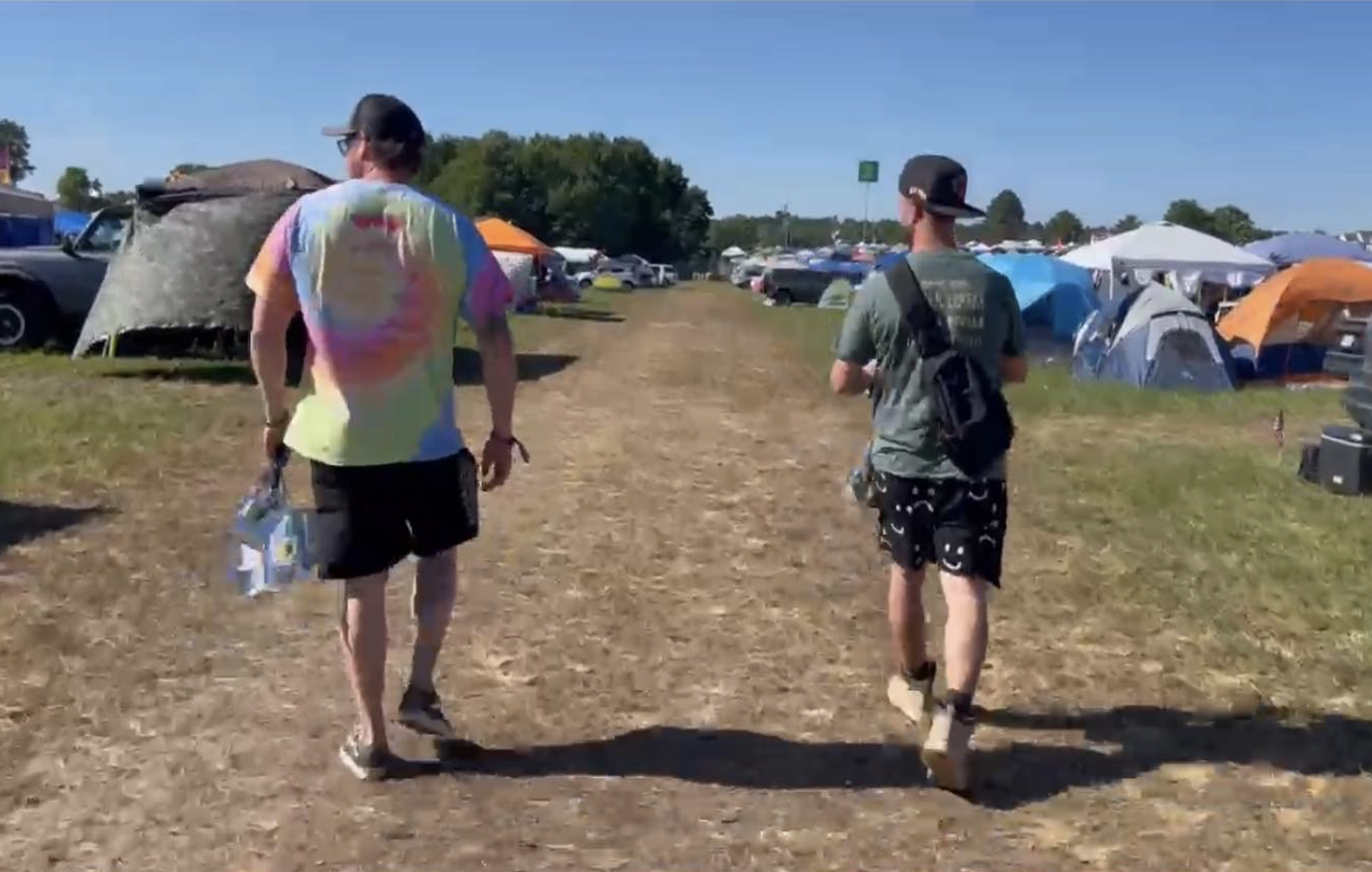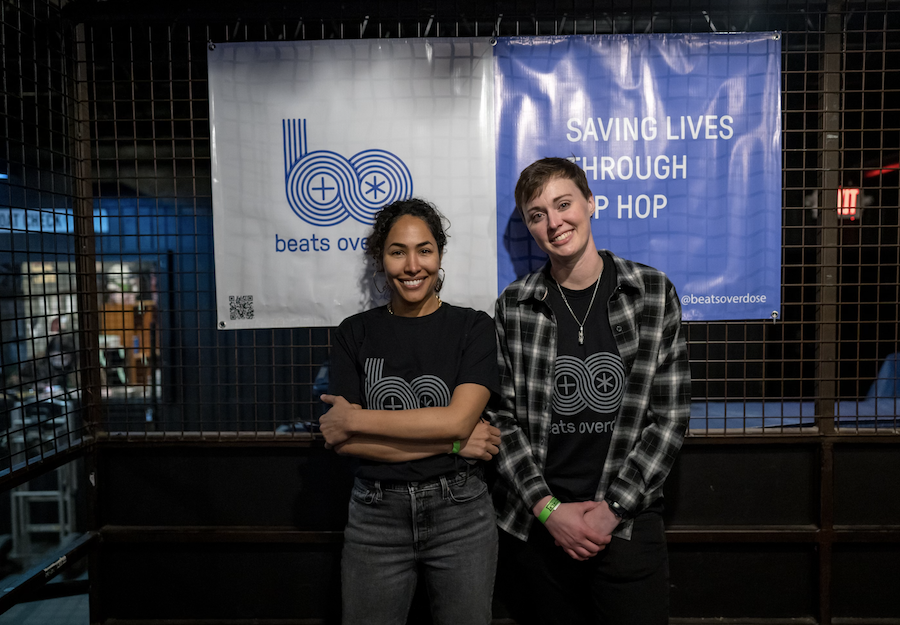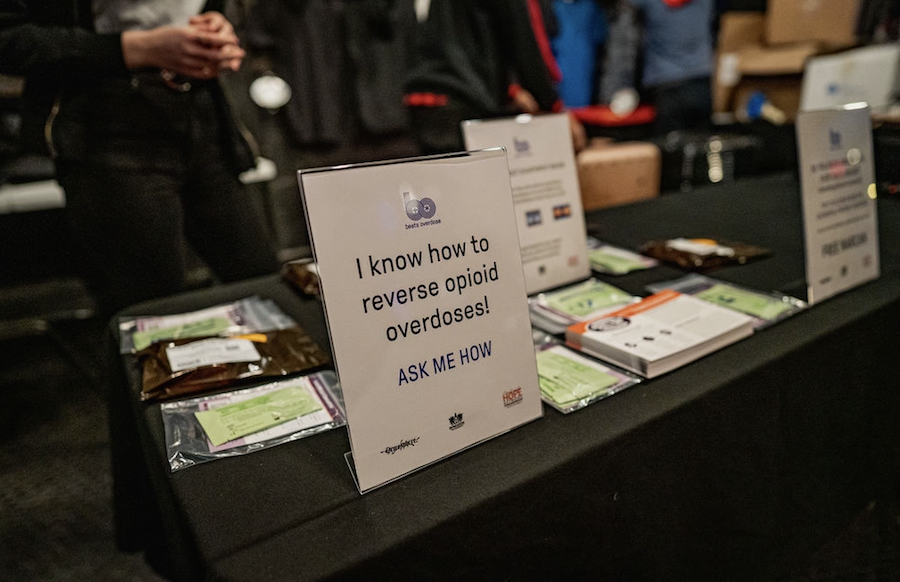Music events feel like one of the last safe, unifying cultural gatherings in a country ravaged by divisions and stresses, including the pressures of a multi-year pandemic. Most of these events were canceled in 2020 and 2021, but this year packed clubs, arenas and festival grounds are back in full force, and folks are heading out—searching for that connection they have so missed, through the music they love.
Just last week, at a music event in Olympia, Washington, a woman was found dead. As we know, tragic deaths are increasingly frequent as fentanyl and its analogs continue to make their way into unexpected substances, including counterfeit prescription pills. People in the 18-45 age range are most vulnerable—and these are the people most likely to attend a music event this summer.
Thanks to a bit of innovation and a lot of collaboration, there will be some protection from the devastation of overdose in these spaces. Three groups are using the dynamic that music events create to distribute naloxone, the opioid-overdose reversal drug, on an unprecedented scale.
We have all realized that we must mobilize, and travel to these large gatherings, to protect a still-emerging at-risk population.
Independently formed, yet operating through collaborative efforts, we have all realized that—just as harm reduction efforts have worked to save lives in established high-risk populations—we must mobilize, and travel to these large gatherings, to protect a still-emerging at-risk population. People who use drugs other than opioids, and through routes other than injection, have often been missed as the crisis has evolved. This coverage gap, for people who may not even realize they are in danger, is one that Beats Overdose, This Must Be The Place and Musicians For Overdose Prevention hope to fill.
Ingela Travers-Hayward, an Emmy award-winning Canadian filmmaker, and William, a social worker who was previously incarcerated for 10 years, formed This Must Be the Place (TMBTP) in Columbus, Ohio. They set their sights high: to hand out 10,000 naloxone kits this summer. They almost immediately secured spots to distribute naloxone at big-name music festivals, such as Bonnaroo and Burning Man.
Meanwhile John Kennedy, an old-school punk rocker, co-founded Musicians for Overdose Prevention (MOP) and focused on getting naloxone into the hands of artists and into smaller venues, especially within the hard rock scene. He has made inroads and connections in hundreds of clubs throughout the southern United States, from his base in Asheville, North Carolina.
And Morgan, an overdose survivor who was later incarcerated for drug-induced homicide, partnered with Rhymesayers Entertainment to form Beats Overdose. Focusing on hip hop spaces, they go out on tour with artists, and activate at each stop with naloxone distribution and community engagement. Technically based in Oregon, they work in over 20 states through dozens of volunteers.
By being on-site—visible at booths, roving through the crowds, and sitting and having nonjudgmental conversations at campsites—TMBTP has worked to make the concept of carrying naloxone accessible and acceptable to a demographic with previously limited and stigmatizing information about this lifesaving tool. TMBTP strives to meet people where they are, utilizing teams of volunteers with lived experience to make the mission approachable and relaxed—adding to the safe space that the music event is already providing.

TMBPT volunteers walk the campgrounds at Bonnaroo. Credit: TMBPT
While harm reduction has long had a presence in the EDM scene via DanceSafe and others, it’s been conspicuously absent in hip hop, Morgan noticed, as high-profile artists died in one overdose after another. As she described in Filter last year, Slug from the rap duo Atmosphere has supported Beats Overdose’s work to bring overdose prevention to venues, artists and fans alike, particularly emphasizing many underserved Black and Brown youth as it expands.
TMBTP has passed out over 5,100 naloxone kits at four festivals so far this summer, and has at least six more festivals to go. The group’s data show that nearly 40 percent of the people it encounters have had an overdose happen to someone within their close social circle. And 85 percent of the people encountered have received their first naloxone kit and training through TMBTP.
People gladly take away the naloxone, determined and thankful to be able to do something to prevent another loss within their periphery.
Both Beats, which has distributed 2,000 doses so far this summer, and MOP are experiencing similar responses. Overwhelmingly, event attendees are scooping up the naloxone, thanking the groups for being there, and sharing heartfelt stories of loss, grief, and lack of understanding or guidance when “someone you never would have thought” has passed away from overdose. People gladly take away the naloxone, determined and thankful to be able to do something to prevent another loss within their periphery.
At Bonnaroo, TMBTP encountered a guy whose brother had recently passed away from a fentanyl-involved overdose. Bonnaroo had been his favorite place in the world, and the brother had decided to spread his ashes on the grounds in Manchester, Tennessee. He was already carrying a dose of naloxone on him, but just wanted to give each of the volunteers a hug, and thank them for what they do.
All three groups have realized the potential of music to mitigate the overdose crisis, and yet all have encountered a mountain of difficulties. Naloxone is expensive, and state-funded resources have regulations and stipulations that do not allow for national activations. What’s more, while all three groups share the ethics of harm reduction, supporting access to sterile supplies and safe spaces, the venues in which we operate are not fond of needles. Therefore, we all have to opt for the more expensive nasal version of naloxone.
None of the three organizations have professional grant writers or government funding. TMBTP, for example, has relied fully on crowdfunding, raising money on Instagram with average donations of around $5. But what we do have is each other. Shying away from the competitive nature of US nonprofit culture, our groups have formed an alliance, helping each other to source materials and support as we move through our respective spaces.
Beats Overdose has never received grant funding and lacks the hustle and grind of TMBTP, with Morgan often paying out-of-pocket for expenses. Its instrumental support comes from Rhymesayers Entertainment, and this summer’s efforts to dispense naloxone are thanks in part to a generous donation from Song for Charlie. The Alano Club of Portland also donated T-shirts that will go on sale soon, as Beats looks towards future financial sustainability. Total ideological alignment is not a prerequisite for collaboration. Different folks and organizations focus on different aspects of the overdose crisis, but their central missions are often consistent: save lives.
 Nikki Jean of Rhymesayers Entertainment with Morgan Godvin. Credit: Mike Madison
Nikki Jean of Rhymesayers Entertainment with Morgan Godvin. Credit: Mike Madison
On one miraculous May morning, our missions received some massive support—something that will allow operations on a scale unprecedented in these scenes.
It started with John, of MOP. He somehow found himself on a call with Hikma Pharmaceuticals, the makers of a new form of nasal naloxone, Kloxxado. With the potential for large-scale distribution, they wanted to reach a deal. John told them that was all fine and good, however there was a problem with the price point. They wanted to know what he thought was a fair price, and he had only one response: free.
By the time the leaves begin to fall, this unlikely collaboration will have passed out over 20,000 doses of naloxone.
He assumed that would be the end of it. Yet another call with Hikma took place a week later, and this time John brought along TMBTP to explain its mission. The outcome was a 10,000-dose naloxone donation to TMBTP. Now we could really get to work.
Kloxxado, a high-dose version of naloxone, has been controversial in harm reduction circles, but it works for our programs. Our recipients are not generally regular or deliberate opioid users, offsetting concerns such as precipitated withdrawal that are raised with the 8 mg dose. At TMBTP’s recent distribution at Bonnaroo, people were offered both regular-dose naloxone and Kloxxado, with explanations of the properties of both, and opted for Kloxxado at a 2:1 ratio. Amid the increasing potency of unintended opioid doses, many said they would prefer “a sure thing” in a life-or-death situation, rather than the possibility of needing more than one naloxone dose.
After securing the donation, TMBTP underwent a process of renting a 26-foot truck, going to a facility to load 800 pounds of medication, and then finding room to store it all in an apartment. TMBTP immediately re-distributed 1,000 doses each to Beats Overdose and MOP, which will now be able to spread the love throughout their respective activations.
This summer, all three groups will exceed the goals we started out with. TMBTP will attend more festivals with huge crowds. Beats headed out on tour in early July and will be distributing overdose prevention supplies in states from coast to coast. MOP has made connections at 42 new venues, and is still working every day to find more.
Beats Overdose signage. Credit: Mike Madison
By the time the leaves begin to fall, this unlikely collaboration will have passed out over 20,000 doses of naloxone—most of it to people who would have not had access, information or acceptance of it before.
We don’t know exactly how big of an impact this will have on the overall crisis. But we trust that it will be tremendous—both in the potential to save lives immediately, and in the bigger picture of normalizing the carrying of naloxone for all and talking openly about overdose and how to prevent it, even when open admission of drug use makes some people squeamish.
Yeah, we might not have any money. We might have to stay on a cousin’s pig farm in rural Indiana, or sleep in a truck at a rest stop in southern Tennessee. But we have the naloxone, we have the love and we are bringing it to a venue near you. Music saved each of our lives once, and now we get to use it as a vehicle to save many others.
Top photograph of William Perry and Ingela Travers-Hayward at Bonnaroo courtesy of This Must Be the Place








Show Comments